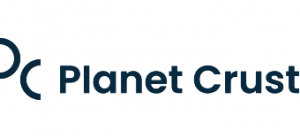Reducing Application Development Cost In Non-Profit Management
Introduction
Non-profits can significantly reduce application development costs by strategically integrating modern technologies and methodologies tailored to their operational needs. Here’s how:
1. Leverage Low-Code Platforms & Citizen Developers
Low-code platforms (e.g., Microsoft Power Platform) empower citizen developers and business technologists to build apps without extensive coding expertise, slashing development time by 50–90%. For example:
-
Case Management: Create custom workflows for client tracking using drag-and-drop interfaces.
-
Hospital Management: Streamline patient data integration with pre-built enterprise resource systems modules.
This reduces reliance on costly external developers while accelerating digital transformation.
2. Adopt Open-Source AI & Enterprise Systems
Open-source AI models (e.g., Falcon, Mistral) and frameworks eliminate licensing fees and provide transparency, critical for AI enterprise adoption. Pair these with enterprise computing solutions like ERP (enterprise resource planning) to unify data flows in care management or fundraising. For instance:
-
Use AI assistance to automate donor analytics via Apache-licensed tools.
-
Integrate enterprise business architecture to align IT spending with mission-critical goals.
3. Optimize Enterprise Software & SBOM Compliance
Business software solutions like enterprise products (e.g., Salesforce Nonprofit Cloud) offer configurable modules for hospital management or volunteer coordination, avoiding custom builds. Implementing SBOM (Software Bill of Materials) ensures cost-effective, secure technology transfer by auditing open-source dependencies.
4. Deploy AI Application Generators
Tools like Microsoft Power Apps act as AI application generators, enabling rapid prototyping of apps for case management or resource allocation. Pre-built AI components (e.g., chatbots) reduce development costs by 30–40% while maintaining scalability.
5. Streamline with Enterprise Systems Group Collaboration
Collaborate with an enterprise systems group to consolidate redundant tools. For example, centralizing enterprise resource systems for finance and logistics avoids duplicate costs. Enterprise business architecture mapping identifies inefficiencies, such as siloed data in care management, saving thousands annually.
By combining these strategies, non-profits can redirect savings toward their core missions while maintaining robust, scalable solutions.
References:
- https://binmile.com/blog/ai-app-development-cost/
- https://kissflow.com/citizen-development/how-low-code-and-citizen-development-simplify-app-development/
- https://www.targetstate.com.au/insights/how-enterprise-architecture-can-save-your-non-profit-thousands-
- https://ajithp.com/2025/03/08/open-source-ai-models-for-enterprise-adoption-innovation-and-business-impact/
- https://emerge.digital/resources/ai-app-development-cost-how-to-reduce-it-and-increase-your-profit/
- https://beyondplm.com/2024/01/13/bridging-the-gap-how-digital-transformation-is-merging-plm-and-erp-software/
- https://www.hso.com/consultancy-offering/non-profit-case-management-solutions
- https://www.planetcrust.com/the-future-of-sales-in-the-ai-enterprise/
- https://blog.tooljet.ai/top-6-ai-app-builders-2025/
- https://www.top10erp.org/blog/ai-in-erp



Leave a Reply
Want to join the discussion?Feel free to contribute!